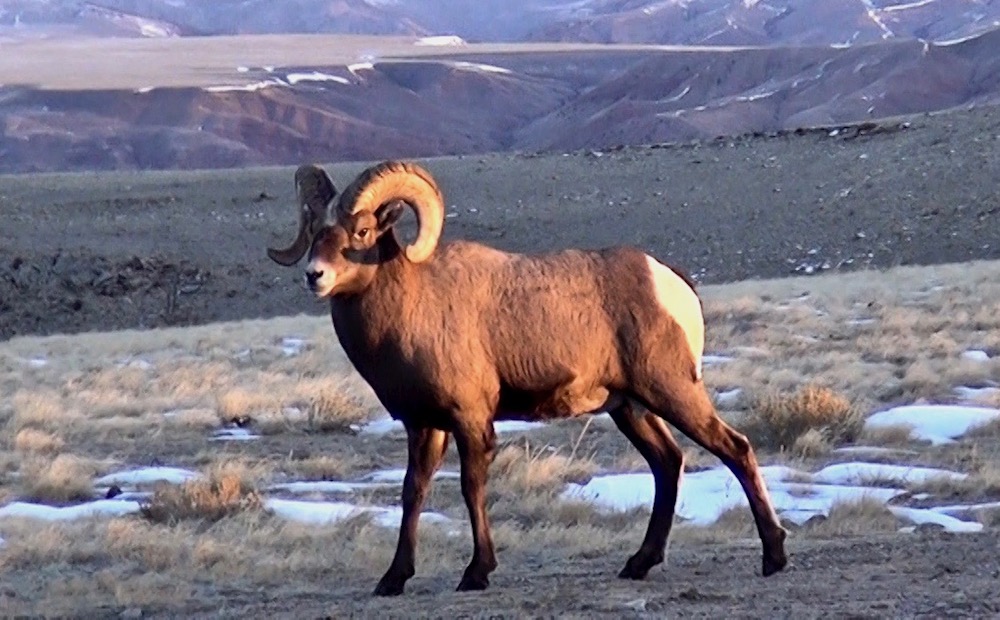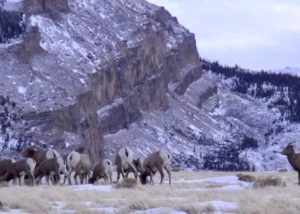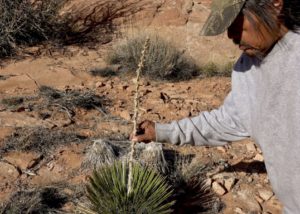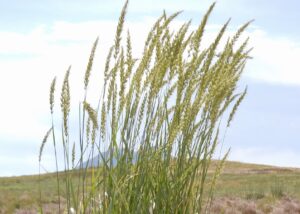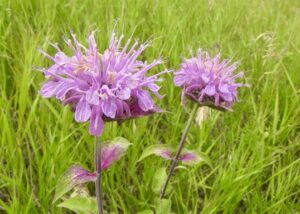Bighorn Sheep
Anatomy and Natural History
The majestic bighorn sheep is probably the first animal most people associate with the high mountains. A male bighorn (ram) can stand up to 41 inches tall at the shoulders (50 at the top of the horns) and weight up to 350 lbs. Due to sexual dimorphism, however, the female are less stocky and stand only 35 inches and weigh up to 188 lbs. with much smaller bones. There is great variation in size amongst wild sheep, and more typically males weigh 130-300 and females 80-180. Bighorn rams in the Sierra Nevada’s rarely exceed 200 lbs.
No matter the size, all bighorns are incredibly agile on the most difficult terrain. We associate bighorn sheep with jagged, snow and ice- encrusted granite peaks in the high mountains but prior to the staggering population declines of almost all wildlife during the period of ‘manifest destiny’ in the middle to late 1800’s, sheep occupied escarpments, buttes and rocky hills, as low as 2,000 feet, all over the Great Plains and deserts from Nebraska to California. Indiscriminate hunting and lack of immune response to domestic sheep diseases brought the wild herds down from millions to only a few thousand by 1900.
Lewis and Clark reported a great abundance of wild sheep which they often referred to as Argalia, thinking they were related to the Asian Argali Sheep which look very similar to bighorn. These sheep were named Audubon Sheep and were thought to be a different subspecies from the wild sheep they observed in the high Rockies. Recent DNA analysis of specimens killed around 1914 before their extinction from the Great Plains has confirmed they are the same species.
There are currently three recognized subspecies of bighorn, canadensis (Rocky Mt. bighorn), sierrae (California bighorn), and nelsoni (desert bighorn). These are found in Mexico, parts of Arizona, Nevada and southern California. Two populations are considered ‘endangered’ – O.c. sierra, and the Peninsular bighorn – a population of O.c. nelson found in Baja, California.
Bighorn sheep are one of two species of wild sheep in North America. The other species is Ovis dali and includes the Dall sheep and stone sheep, both referred to as ‘thin horn’ (rather than bighorn) sheep. These are indigenous to Alaska and Northern Canada. There is a 3rd species in Siberia called snow sheep (Ovis nivicola). All of these species primarily eat grass and forbs and occasionally shrubs.
During the Pleistocene (750,000 years ago) wild sheep crossed from Asia to North America over the Beringia Land Bridge and began to adapt and evolve into the forms we have now. Their occupation of the extreme rugged alpine terrain gave them a distinct advantage over most predatory animals. A good thing – since short-legged wild sheep cannot outrun any of their natural predators on flat ground.
Predators today include mountain lions, coyote, bear, and eagles They primarily feed on lambs which weigh 8-10 lbs. at birth and can walk hours after birth. Mothers will fiercely defend their lambs using horns and front hooves.
The dramatic clashing of the horns of wild sheep has become an iconic symbol of the western wilderness. This loud and powerful display of dominance is used by rams to assert their position in the pecking order. Once established, this rank will enable dominant males to maintain a “tending” area under their control. Mating “rights” are then claimed by one ram to the exclusion of younger, smaller rams. Rarely does a ram under seven years of age achieve such status, yet younger rams will continue to challenge dominant rams prior to actual mating, and this may lead to further horn clashes. To the extent that a ram defends his ewes against intruders, the ewes will show breeding preference to that one special ram. Once in season, the sound of clashing horns actually brings on estrus the physiological process wherein females become receptive to breeding.
Except for breeding season, ewes and rams lead very separate lives, almost like two different species. Rams are fond of loftier crags and rocky exposed prominences with a good view, while ewes may be miles away on grassy slopes and alpine meadows with their lambs – never far from the “escape terrain” of rocky and precipitous outcrops or cliff edges.
Breeding takes place in November or December on the winter range. Gestation takes 5 months. By May the herd is again separated into male and female bands in different spring ranges. Lambing takes place on specific lambing grounds, well worn by hundreds of years of untold generations of ewes using the same wallows carved in the alpine turf by the scraping of hooves to create low profile beds for their lambs to be born. These are communal activities for the ewes, as are the nursery bands which follow birthing, and are generally located very close to the lambing grounds. Nursery bands tend to be groups of 15 to 35 ewes with their lambs and represent extended families. Ewes take turns being babysitters – watching over lambs while the other ewes go away to the best feeding areas. There is generally a guardian ewe also, often a barren ewe, who sits on a high point and watches for a possible threat. Vocalizations, a head-held-high posture, and stomping of the front feet, alerts the others of danger looming!
Nursery areas are specific places used year after year by the same nursery bands where the topography provides a good view of the landscape, vegetation for food, available water, escape terrain and mineral licks. High mountain soils often produce mineral deficient food plants so that commonly ewes under the physiologic stress of producing a lamb plus lactating, will travel long distances every two weeks to eat soil high in trace minerals. (On mineral deficient summer ranges milk production can drop as much as 83% – resulting in smaller lambs with lowered immune response.)
The Whiskey Mountain herd located 60 miles east of Jackson Hole, Wyoming is the largest bighorn herd in the United States. Some of these sheep travel 11 miles over a very rugged landscape strewn with blown-down trees for a long section of the route, to eat soil at mineral licks at lower elevations. Most predation for this segment of the herd occurs along this dangerous route.
Sheep ranges in general are divided into three to five seasonal ranges: summer, fall, winter, spring, and lambing grounds. Winter ranges are usually the critical link in the chain. They must be big enough to provide food for the entire herd and be on sedimentary soil for a complete nutrient base for forage plants and/or have ample mineral licks nearby.
Winter ranges are often high ridges where wind can blow winter snows away leaving the short mountain grasses and forbs available. Sheep don’t like to push through deep snow to feed.
Although pronghorn and elk are famous for long marathon seasonal migrations (at least in the old days before settlement) of over 100 miles, bighorn sheep usually only migrate five to 15 miles between summer and winter ranges.
Native American
Many thousands of wild sheep died as the result of pneumonia and scabies infestation when domestic sheep were brought into the West in the mid to late 1800’s. They had virtually no resistance to these Asian and European diseases. In addition, the meat of bighorn was highly prized by early explorers and settlers. Later, big game trophy hunters came to exploit the massive heads of the rams. A ram’s set of horns can weight up to 30 lbs. Mountain sheep were pushed to the edge of extinction by the late 1890’s.
The hide was highly prized for its warmth by Native people in winter clothing. The Mountain Shoshone people depended on bighorn sheep for most of their clothing, shelter and food. They made wickiups covered with wild rye grass and sheep hides, wore clothing and moccasins with hair-in sheep hide, ate the meat of these sheep, and made sheep horn bows (the most powerful weapons before rifles came to the Indians.) They were so strongly tied to these animals that they were known as ‘Duka Dika’, or Sheep Eaters. All of this meant survival as well as valuable trade goods for these dwellers of the high country.
In the North Absoroka Range which forms the east boundary of Yellowstone National Park there is an archeological excavation called “mummy cave”. The mummy found deep in the ground of this cave is thought to have been a Duka Dika (mountain Shoshone) man who was carefully buried over a thousand years ago. High topped winter moccasins made of sheep hides with the hair in, were folded neatly by his side… an essential for life in the snowy mountains of Western Wyoming.
The Sheep Eaters built sheep traps out of dead-fall trees at high elevations, with long drive-line fences six to seven feet high. Often hundreds of yards long, they were designed to move the animals into the trap where they were clubbed at the back of the head and killed. Many of these traps and drive lines are still found in the mountains of this region, as are the dwellings called wickiups or conical timber lodges. Some of these are hundreds of years old and still standing!
The Apsaalooka or Crow people who once shared much of this territory with the Shoshone also held the bighorn in the highest esteem. A Crow storyteller named Old Coyote tells this story from the time when animals could talk: “Evil spirits possess a man who tries to do away with a rightful heir by shoving the youth off a cliff. The young man lands in a tree and is rescued by bighorn sheep. He takes the name of the chief of the sheep – Big Metal. Big Metal comes down from the Big Horn Mountains and gives his people a message: “The Apsaalooka people will surely survive as long as the great river flowing from the mountain is known as the Bighorn River.” Today, the Crow Reservation is located along the Bighorn River in South-Central Montana.

